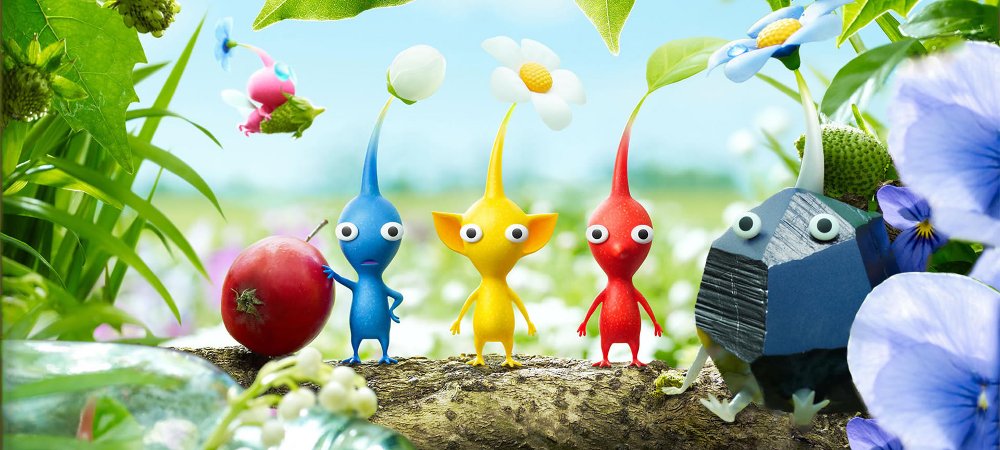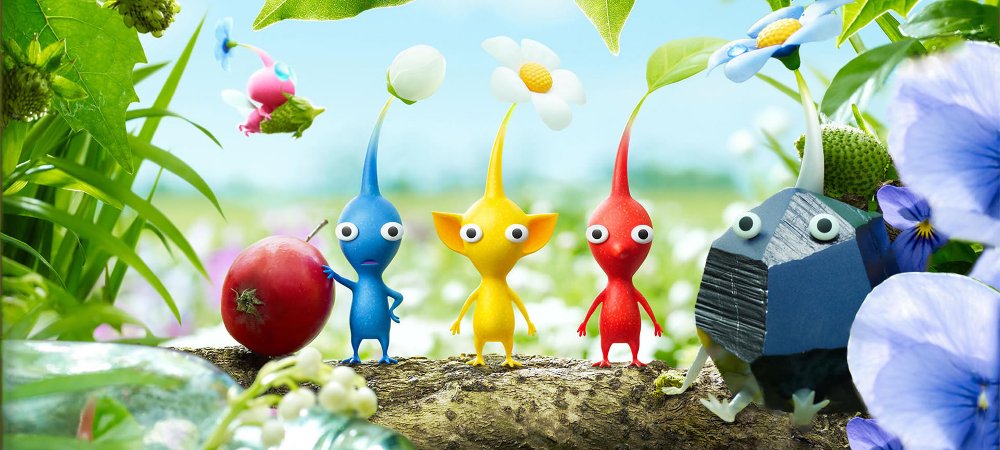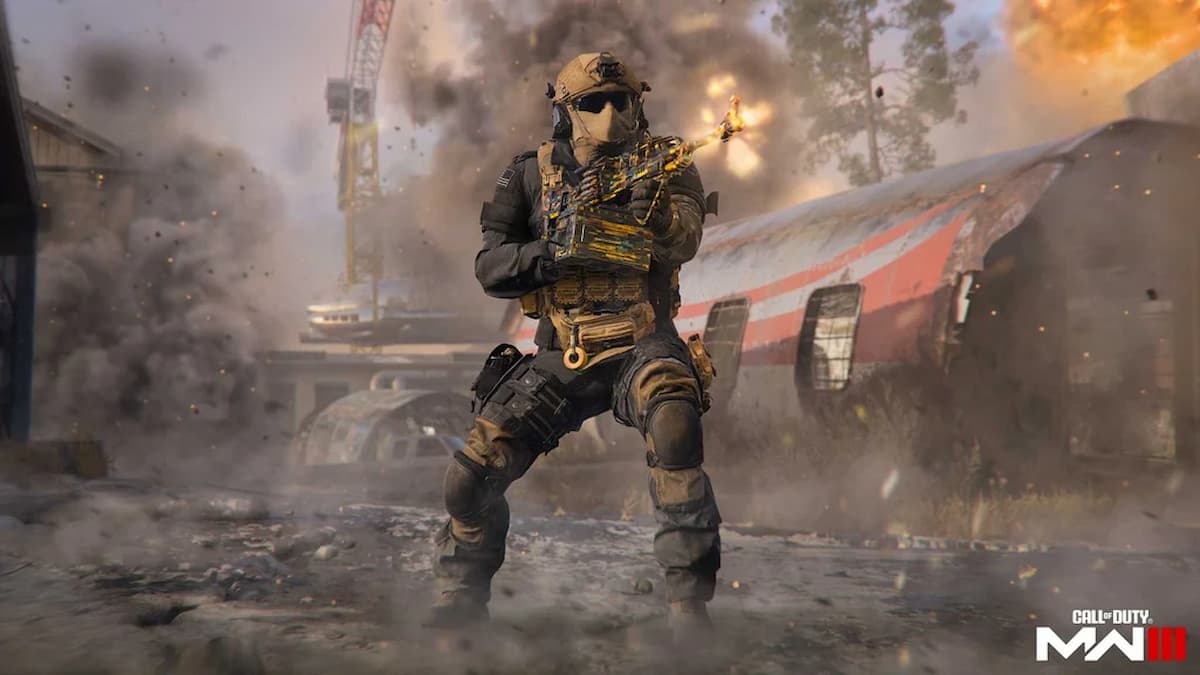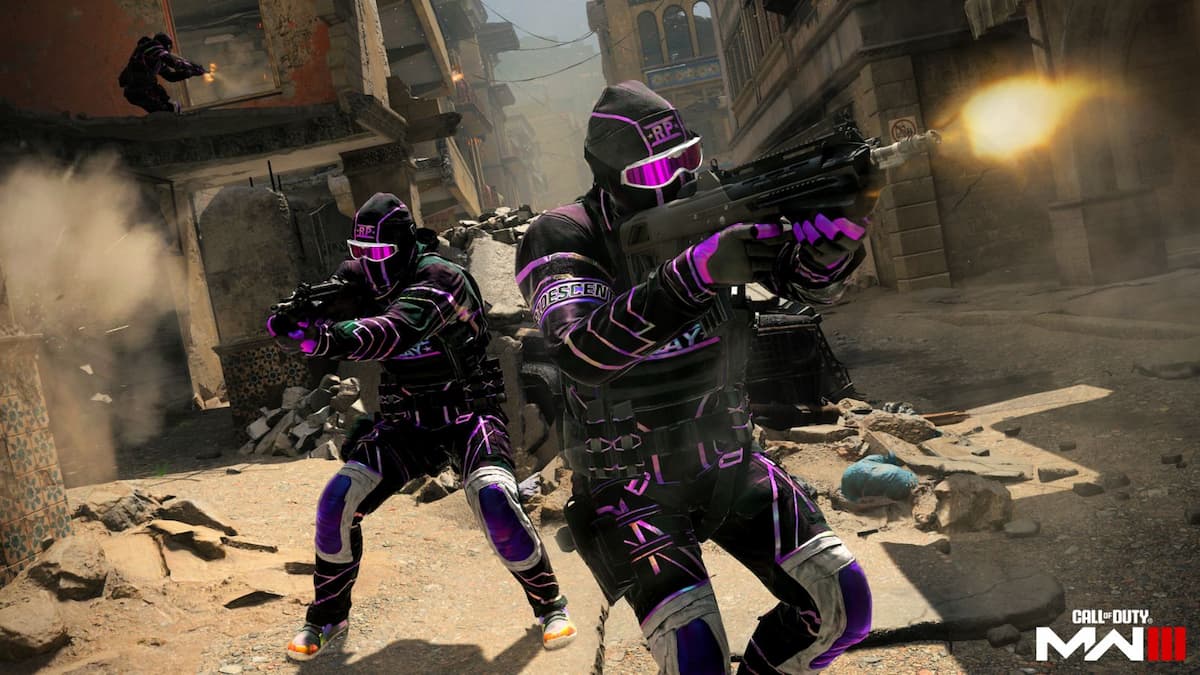Not a minuscule pick
When Nintendo saw what “realistic polygon-powered graphics” were possible on the GameCube/Xbox/PS2, their first instinct wasn’t to make a game about human beings doing crimes, saving the world, or even talking to each other. It does not seem that Hollywood-style activities are in Nintendo’s DNA.
Instead, they came out swinging with a game about harvesting little carrot people born to die selflessly in battle against giant cute/ugly wildlife in a lush, bustling wilderness. On the surface, there isn’t much here that resembles the “realistic life experiences.”
Scratch that surface and you’ll see that underlying concepts of Pikmin are all too “real.” Balancing concern for others vs. self-centered greed, experiencing the frailty that comes from accepting the inevitable passage of time, and facing the anxiety that comes from voyaging out on your own are the core components that make this series tick. Basically, it’s adult life in videogame form — specifically the life of a boss.

Pikmin 3 (Wii U)
Developer: Nintendo
Publisher: Nintendo
Released: August 4, 2013 (NA), July 26, 2013 (EU)
MSRP: $59.99
Pikmin takes all of the things that Nintendo is most well known for (simple but elegant world building, sweet and surreal scenarios, small but mysterious open worlds teaming with mystery) and uses them to impart a metaphorical expression of being a project director, guiding a team of adorable peons towards the future, scraping by to survive, holding on to hope, and constantly wrestling between the feelings of powerlessness and authority that come with being in charge.
Using the the power of the Wii U, Nintendo has worked to make Pikmin 3 the most effective expression of that idea yet. One thing is for sure, they got the realistic fern graphics down. They look amazing.
Pikmin 3 is more an alternate follow-up to Pikmin 1 than a direct sequel to Pikmin 2. A lot of the enemies, items, and design features from the last game in the series are nowhere to be seen here. Where Pikmin 2 contained almost everything that was in Pikmin 1 while expanding in a lot of new directions, Pikmin 3 is a more densely concentrated, harder-hitting blast of the core Pikmin 1 experience.

For fans of Pikmin 2, those refinements may be come as a disappointment, as they mean a lot of the more experimental ideas there have been cut. Though I love Pikmin 2, I can say that it’s largely for the best that Pikmin 3 goes its own way. The execution of concept here is hard to knock.
That’s not to say that Pikmin 3 doesn’t know how to do its own thing. This time around you won’t be collecting parts for a ship or random trinkets for cash. Now the focus is on fruit, as fruit is the only way to stay alive. Use fruit to make juice. It takes one bottle of juice a day to stay alive. Run out of juice and you’re dead. Pretty serious stuff for an E-rated game.
Staying alive through effective fruit acquisition isn’t just an arbitrary goal. It’s intimately tied to the game’s overarching narrative, which is surprisingly pronounced. Nintendo wasn’t kidding when they said that they were testing the waters for a Pikmin cartoon. Great care was taken to create a sense of character and narrative that works in tandem with Pikmin’s themes and gameplay.
The story focuses on Alph, Charlie, and Brittany — three interstellar travelers headed to planets unknown for food to sustain both themselves the people of their home world, as their culture has squandered their own natural resources to the point of apocalypse. Through short cut scenes, mid-gameplay dialogue (spoken in a delightful alien jargon), survivor’s journal entries littered throughout the world in the classic Resident Evil-style, and the occasional use of a fixed camera to help set the mood, we’re graced with a simple but telling tale of adventure, ambition, betrayal, and disaster. There are so many cute disasters in Pikmin 3. It’s like a space Muppet sci-fi nightmare.

The social dynamics between the three commanders are just as prevalent in the story as they are in the gameplay. New to the series is the ability to control three characters at once, which greatly expands your multitasking potential. You can have one or two gather a heard of Pikmin and send them walking to a set location while you directly control the third protagonist. On a smaller scale, there are also plenty of puzzles that task you to actual pick up and throw other player characters in order to progress and collect items. These abilities force you to look at your environment in a different way, and take greater risks in managing your time.
But this game is called “Pikmin,” right? So what about the Pikmin? What new ideas did Nintendo cook up for us on the Pikmin front? The bad news is, there are some downgrades. Purple and White Pikmin are not a part of campaign mode. The good news is, they’ve been swapped out for all new breeds. It’s more than a fair trade. While I love the Purple and White Pikmin, I can’t deny that the Rock and Winged Pikmin outshine them in most every way. They aren’t just new-looking keys for old-looking locks. They add both a tactile and strategic dimension to the game that feels significant and satisfying.
Rock Pikmin are the first new type that you encounter. You’ll want to bring them along for almost every fight in the game, though unlike the Purple Pikmin, they aren’t wildly unbalanced compared to the combat prowess of other breeds. They pack much more concussive force than other Pikmin, able to break armor and dizzy foes, but their chunky body’s and little arms and legs permit them from latching onto surfaces.
You’ll often need to start a fight by cracking an enemy open with your Rock Pikmin, then finishing the job with the face-latching tendencies of other types. There is something indescribably satisfying about this process. It doesn’t seem to ever get old.

The Winged Pikmin don’t offer the same visceral joy that comes for shattering faces with rock friends, but they offer an antithetical take on the Pikmin formula which is just as interesting. For the most part, you only do two things in a game of Pikmin — walk and throw Pikmin. Both of those actions rely of gravity to work. What happens when you take gravity out of the equation?
Winged Pikmin offer up an answer, and the results are surprising. They walk a line between being severely under-powered and almost unfairly privileged compared to their walking brethren. With a sweet lackadaisical attitude, Winged Pikmin will glide over obstacles and environmental hazards as though they aren’t a problem for anybody. They’ll even follow you above the surface as you travel underwater, finally ending the semi-racist “Blue Pikmin only” segregation that accompanied aqua escapades in prior Pikmin adventures.
The downside to all that advanced mobility is a definitive lack of weight. Being resistant to gravity makes it harder to pack a punch, making Winged Pikmin a treasured liability in combat, except for when it comes to bird-bees. Winged Pikmin hate bird-bees, and are great at murdering them.

The heavy and hard Rock Pikmin paired with soft and light Winged Pikmin cover the extremes of the Pikmin world, but there are a fair amount of new ideas found in the colors in between. Reds remain largely unchanged, working as your fireproof mainstay combatants, but the Yellows and Blues have gotten a few tweaks to make them feel fresh. Yellows still soar higher than the reds, but their ability to work with electricity have been enhanced to illuminating proportions. Blues have finally learned how to swim, making underwater fights a lot less stagnant. It’s great to see these old dogs learn new tricks while staying true to their breeds.
Now for my favorite part of the game: the boss fights. They bring out everything that makes Pikmin 3 fantastic and turn the volume up full blast. The first two are designed expand the player’s understanding of how to use the various Pikmin types they’ve acquired up until then; the third is more of a set-piece spectacle that plays on the always exciting risk/reward relationship that comes along with playing with explosives; the fourth and fifth again work to expand your understanding of even more Pikmin you’ve partnered with; and the last tasks you to prove your mastery of all five Pikmin types in rapid succession.
These are the kinds of boss fights you want to replay immediately after finishing them. As soon as you take one of them down, you’re left thinking that with a little smarter tactics and a little more nimble reflexes, you could have maybe lost a few less Pikmin or gotten through the ordeal just a tad bit faster. The hint of depth drawing you into deeper pursuit of superior strategy and execution is always there, which makes the game’s Boss Rush mode (featuring co-op!) ridiculously compelling.

Boss Rush is the first of the game’s four co-op enabled, off-campaign modes, including five treasure hunting stages, five monster-hunting modes, and twenty multiplayer “Bingo Battle” versus maps (allowing for one-on-one and two-on-two matches). While most of the themes and monsters here are recycled from the campaign mode, there are a few unique creatures, bosses, and locations that make each extra required playing. These off-campaign sections are also the only places you’ll find the White and Purple Pikmin from Pikmin 2, which is fitting, as these modes most closely recreate the experience of Pikmin 2‘s survival-focused dungeon segments.
That brings us to the small list of other aspects of Pikmin 2 that have largely gone AWOL. You can no longer move Pikmin manually as they line up behind you. I really missed that feature at first, but in retrospect, it was always always sort of a cheat. Instead, you now can lock on to a target and command your horde to rush it down in one massive push, or command your crew to swiftly dodge left or right en mass with quick hit of the control pad. These new moves feel more fair, instilling the feeling that you can only command your army and never fully control them.

The ability to zoom in or switch to an overhead view are also gone. It’s not much of an issue, though — the camera height and position is almost always perfect as is, and if need be, you can still swing the camera behind your back at any time. If you really need an overhead view of the action, you can always resort to the GamePad map, which constantly comes in handy.
It can be easy to become disoriented in the game’s organically structured, secret-packed environments, and a map is just the thing to help you keep it all sorted. Though I played the majority of the game with the Wii Remote and Nunchuck (for their superior pointer aiming controls), I kept the GamePad by my side during 99% of my time with Pikmin 3 (the other 1% was with the GamePad’s Off-TV play, which holds up very well).
Pausing to use the GamePad as a map and to manually direct my other commanders around the field was essential while controlling my on-screen actions with the Wii Remote and Nunchuck. This setup felt surprisingly natural and convenient — like looking at a GPS while driving. A quick glace was all I needed to keep things straight.

There are a few other omissions that left me scratching my head a bit. It’s strange that there is no option to aim with the second analog stick on the GamePad, or use touch-screen aiming like in the Pikmin Adventure portion of Nintendo Land. The game also feels a lot less populated than I expected. There’s no arguing that Pikmin 2 had more content, with a larger (sometimes heavily armed) bestiary, 30 challenge levels, and more overall ground to cover. I’m guessing that it was cheaper to include all that content in Pikmin 2, as many of the assets were recycled from the first game.
Pikmin 3 had to start over with all new HD textures and character models, which must have taken a lot more time and money. Either way, I’d never judge a game by what it isn’t, but it’s still worth noting that Pikmin 2 fans may be surprised by some of the stuff that didn’t carry over to this sequel. I think I’ll miss you most of all, Bulbmin.

Pikmin 3 isn’t everything that Pikmin has ever been before, but it’s still the best representation of the concept to date. It feels like a full replacement of Pikmin 1, and a perfect companion to the different-but-equal Pikmin 2. The series’ signature creepy, cartoon-like take on real trials of life is there in full force, bolstered by incredibly beautiful graphics, an unexpectedly involving story, tons of secrets, and new ways to play, all while never straying from the spirit of the original game.
I still haven’t found all the baubles that Pikmin 3 has to offer (gosh darn secret files are so elusive!), and I can’t wait to dig back into the game over the coming days, months, and even years to try to find them all. The Pikmin series does things that no other games do, and Pikmin 3 does those things better than ever before.





